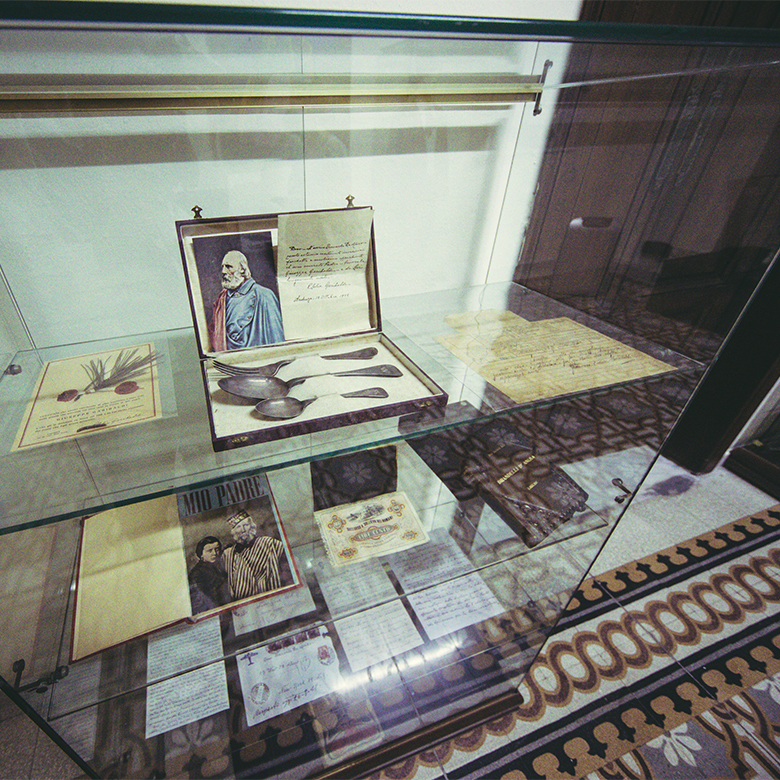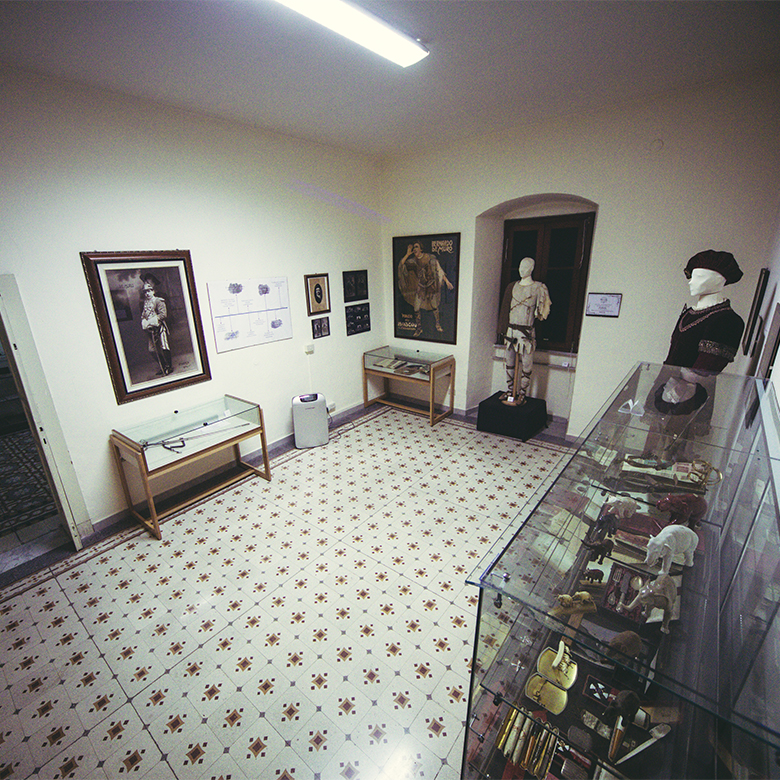Bernardo
De Muro
Museum
The Bernardo De Muro Museum was founded in December 1980. The assets which are found in it have become part of the municipal heritage since 1953 with a donation made by the tenor himself. Over time, the collection was further enriched by subsequent donations.
The Bernardo De Muro Museum is located in the GM Dettori Municipal Library, in the recently restored compendium of the former Franciscan College of the Piarist Fathers. The space dedicated to the Museum consists of two rooms located on the first floor of the building. The De Muro Fund is an important testimony to the life and musical career of Bernardo De Muro, an international opera singer.
The Fund is made up of records, stage costumes, photographs, musical scores, correspondence and a large press review, carried out by the tenor in the newspapers of the time, which documents and highlights all the events of his artistic career. The fund can be divided into three broad sections: paper material, textile material and various materials.
By “various materials” we mean all objects of daily or non-daily use, which were the result of gifts or purchases by the De Muro family. They include a spring gramophone, Bakelite discs, various ceramics, wooden and hard plastic objects, coins, glass, ceramics, silver objects including cutlery which belonged to Giuseppe Garibaldi, weapons with ivory and bone decorations, chests branded "Brigata Sassari", pipes of different types, etc.
The printed material groups together: photographs of different formats, manuscripts which include transcriptions, corrections on musical scores and texts, dedications on various materials including photographs, books, diaries, newspaper clippings, most of which concern reviews of works performed by him, prints including telegrams, paper money, posters, books, portraits, certificates, letters, musical texts, tourist guides, novels, sacred texts, magazines, paintings and drawings (caricatures and portraits) made with different techniques.
The textile material mainly consists of stage costumes. Textiles are all the stage costumes worn by the tenor during his performances, enriched by metallic, ceramic and plastic applications applied to materials such as silk, cotton, wool, satin and leather for footwear. As well as the complete stage costumes, there are also individual elements such as trousers, shirts, tights, a cape and accessories. An integral part of the stage clothes are the accessories, from the fabric or leather belts to the helmet which is part of the Radames dress with plumage and sequins, from bracelets, swords, daggers, a horn, chainmail, of a metallic nature, up to the sheath of the sword - with the bone handle - of the Osaka costume.
Recently the collection has been enhanced with additional objects donated by the daughter of the Tenor Johanna Elena De Muro Speaks (known as Dina), who currently lives in the United States, to the Municipality of Tempio Pausania.
The project for the refurbishment of the Museum in the former convent of the Piarist Fathers started in April 2007, in collaboration with the Superintendence for Historical Artistic and Ethno-anthropological Heritage for Sardinia. The maintenance and restoration work on the assets belonging to the tenor Bernardo De Muro was completed in 2013. The maintenance and restoration activity involved almost all the textile and photographic artefacts and about 70% of the paper ones.
The recordings, published on the HMV (HIS MASTER'S VOICE) label and the US brand VICTROLA, offer further added value to De Muro's already brilliant career. Based on the information taken from the publication by Antonino Defraia, who published an anthology of the Tempiese tenor entitled: "The Myth of the Opera - Bernardo De Muro", the first recordings date back to 1912 and include some arias from Folco di Isabeau and Andrea Chenier. In 1917, however, he devoted himself to recording the most famous Verdi motifs of Il Trovatore, Aida and Otello. De Muro's series of recordings ended between the 1920s and 1928, with recordings of other famous pieces from Carmen and La Fanciulla del West.



